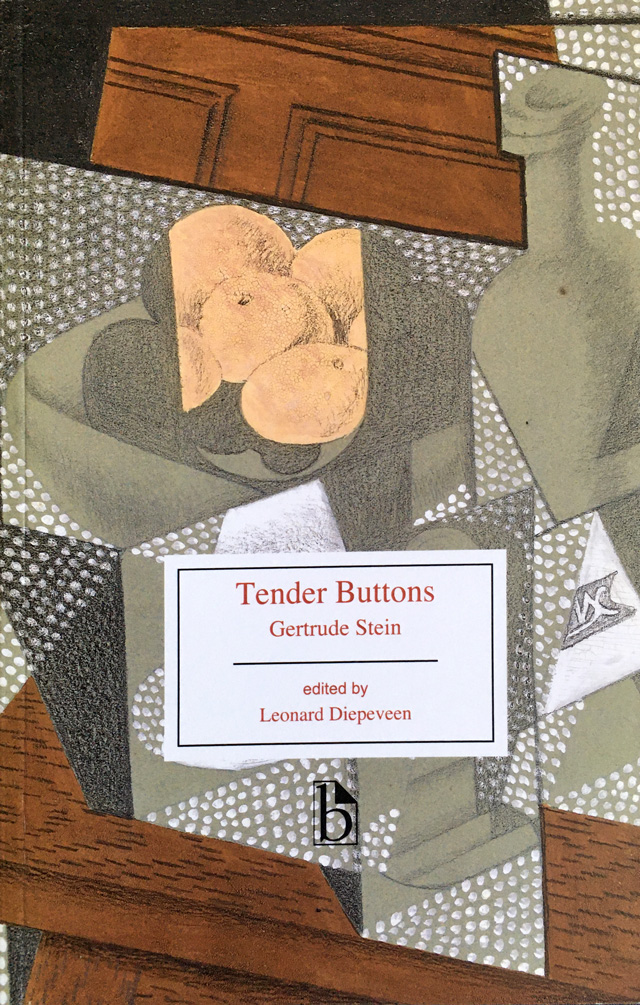

Tender Buttons, by Gertrude Stein. Peterborough, ON: Broadview, 2018.
Tender Buttons had the most explosive and voluminous response of any modernist text (including Ulysses and The Waste Land). Despite its having been printed in an edition of only one thousand, the book attracted hundreds of reviews, and in a few months become a national occasion—suggesting that many responses and reviews were written solely on the basis of having read other reviews. But this history has largely been forgotten. This is not because of Stein’s lack of interest in what people were saying about her work: she a clipping service to keep track of her appearances in the press. One of the new manifestations of the late nineteenth-century explosion in newspapers and the modern interest in publicity, a clipping service like Romeike (began in 1881 and touting itself as “The First Established and Most Complete Newspaper Cutting Bureau in the World”) shows at its barest that Stein cared enough about her public reception not only to pay attention but to pay. Romeike clipped out every reference to Stein in from dozens of newspaper across the United States and Canada. The clippings are from big national papers like the New York Times, to the Louisville Courier-Journal, to the St. Joseph News-Press. This range shows that Stein’s work, within a few months of Tender Buttons being published in an edition of only one thousand, was known on some level to general readers in places like Toledo and San Antonio.
This edition of Gertrude Stein’s Tender Buttons will have two foci. One, of course, will be Stein’s text, published in 1914 by Claire Marie. My edition, however, will provide not only the text, but also a good deal of the initial response to the work, response which is integral both to understanding what Tender Buttons means and to current pedagogical practice in teaching modernist texts.
These early readings of Tender Buttons are fabulously entertaining and interesting—who wouldn’t like to read more of an article that includes: After a hundred lines of this I wish to scream, I wish to burn the book, I am in agony. It is not because I know that words cannot be torn loose from their meanings without insulting the intellect. It is not because I see that this is a prime example of the ‘confusion of the arts.’ No, my feeling is purely physical. Some one has applied an egg beater to my brain. (“Flat Prose” 38-39) But more, they are pedagogically extremely useful. In the extremity of their response they show the standard aesthetic principles of the day under stress. They reveal the conditions under which Tender Buttons was first understood, how it became a symptom for modernity, and how it provided a handy analogue for understanding modern painting and music as well. They also believed that Tender Buttons provided insight into how modernism worked in mass culture more generally, particularly in relation to fashion, advertising, and celebrity culture. Early readers, then, turned Tender Buttons into something bigger than just the text in front of them, understanding this text to open doors to all kinds of aspects of modernism and modern culture.